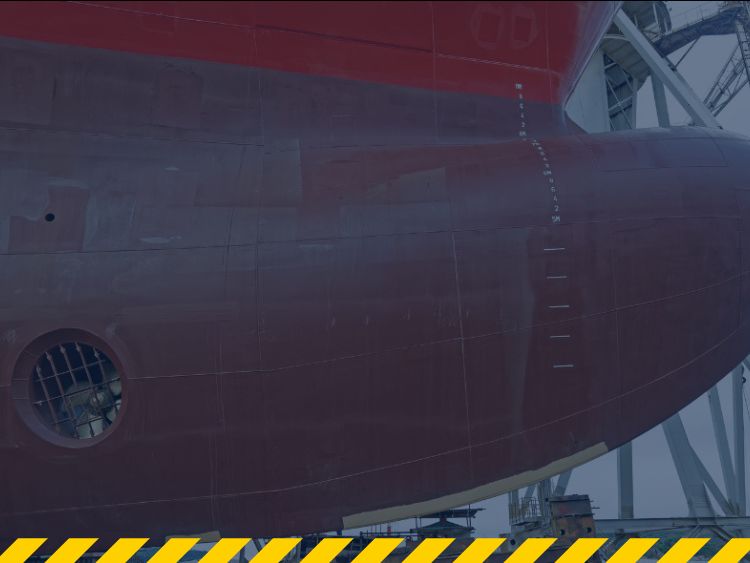A bow thruster is a lateral propulsion device installed near the front (bow) of a vessel. It allows the vessel to move sideways without changing direction, greatly improving maneuverability during slow operations like docking, undocking, and navigating narrow waterways.
The primary purpose of a bow thruster is to give sideways thrust, which helps position the vessel accurately. This is especially important for large ships less responsive to rudder movements at slow speeds due to their massive size and inertia.

- Enhanced Maneuverability: By pushing the bow sideways, captains can make fine adjustments to the ship’s position.
- Independent Movement: It reduces reliance on tugboats and external assistance during docking procedures.
- Safety: Improves control in crowded or narrow ports, reducing the risk of collisions.
Types of Bow Thrusters
1-Tunnel Thrusters
The most common type features a tunnel running through the hull with a propeller inside.
Advantages: Simple design, effective for most vessels.
Considerations: The tunnel can affect hull integrity and hydrodynamics.
2-Retractable Thrusters
Can be deployed when needed and retracted to reduce drag.
Advantages: Minimizes hydrodynamic resistance when not in use.
Considerations: More complex mechanics, higher maintenance.
3-External Pod Thrusters
Mounted externally on the hull.
Advantages: Easier installation, especially for retrofits.
Considerations: Increases drag, potential for damage from debris.
4-Water Jet Thrusters
Use high-pressure water jets instead of propellers.
Advantages: Fewer moving parts, less susceptible to damage.
Considerations: Generally less powerful, more complex pump systems.
Components and Technical Specifications
A bow thruster system typically includes:
- Motor: Powers the thruster, can be electric or hydraulic.
- Propeller or Impeller: Generates thrust by moving water.
- Gearbox: Transfers power from the motor to the propeller.
- Controls: Located on the bridge for easy operation.
- Power Source: May require dedicated generators due to high power demands.
Technical Considerations:
- Thrust Output: Measured in kilonewtons (kN), indicating the force the thruster can apply.
- Power Consumption: High electrical or hydraulic power requirements.
- Tunnel Diameter: Affects the efficiency and amount of thrust generated.
- Installation Location: Placed as far forward as practical to maximize turning moment.
Using a bow thruster involves several operational aspects:
- Low-Speed Effectiveness: Most effective when the vessel is moving slowly or stationary.
- Wind and Current Compensation: Helps counteract environmental forces during maneuvering.
- Integrated Controls: Often linked with stern thrusters and propulsion systems for coordinated movement.
Operations and Maintenance of Bow Thrusters
To ensure optimal performance, use the bow thruster in short bursts. This approach prevents overheating and conserves power. Regular maintenance is crucial; inspect the thruster for debris, corrosion, and wear to maintain reliability. Proper operator training is essential so they can use the thruster effectively and safely.
Bow thrusters offer several advantages. They enable precision maneuvering, allowing for exact positioning in tight spaces. This capability can reduce operational costs by lowering the need for tug assistance. Improved safety is another benefit, as enhanced control reduces the likelihood of accidents.
However, there are limitations. Bow thrusters are power-intensive and require significant energy, which may strain the ship’s power systems. They are also vulnerable to damage from debris and grounding impacts. Additionally, they can generate significant noise and vibration.
Regular maintenance ensures the bow thruster operates effectively. Ship repair companies like Weser Maritim offer underwater bow thruster repairs in Istanbul, Türkiye.
Routine inspections are necessary to check for signs of wear, corrosion, or damage. Underwater cleaning involves removing marine growth and debris from the tunnel and propellers. Keeping moving parts properly lubricated reduces friction and wear. Periodic operational tests verify the system’s performance.
Common issues include electrical failures, where problems with motors or controls can render the thruster inoperative. Mechanical wear, such as worn gears or bearings, can reduce efficiency or cause failures. In hydraulic systems, leaks can lead to loss of power and environmental hazards.
Technological Developments
Advancements in bow thruster technology aim to improve efficiency and reduce environmental impact. One significant development is the use of variable speed drives. These systems allow precise control over thrust levels, enhancing maneuverability and boosting energy efficiency. By adjusting the motor’s speed, operators can apply just the right amount of force needed for specific maneuvers, conserving power and reducing wear on the thruster components.
Another innovation focuses on noise reduction designs. Engineers have developed new propeller and tunnel configurations that minimize cavitation and noise generation. These designs not only improve passenger comfort by reducing onboard vibrations and sounds but also lessen the acoustic impact on marine life, which is sensitive to underwater noise pollution.
Hybrid systems represent a major leap forward in sustainable maritime operations. By integrating bow thrusters with hybrid power systems, ships can reduce fuel consumption and lower emissions. These systems often combine traditional engines with electric motors and energy storage solutions like batteries or supercapacitors. During low-speed maneuvers or while in port, vessels can rely on cleaner electric power, decreasing their environmental footprint and complying with stricter emission regulations.
Conclusion
A bow thruster is a critical component that enhances a vessel’s maneuverability, safety, and operational efficiency. By understanding its function, types, and maintenance requirements, maritime professionals can effectively utilize bow thrusters to improve vessel handling in challenging environments.
Whether for large commercial ships navigating busy ports or yachts docking in marinas, bow thrusters play a vital role in modern maritime operations. Embracing technological advancements and adhering to best practices ensures these systems continue to provide valuable support to seafarers worldwide.

